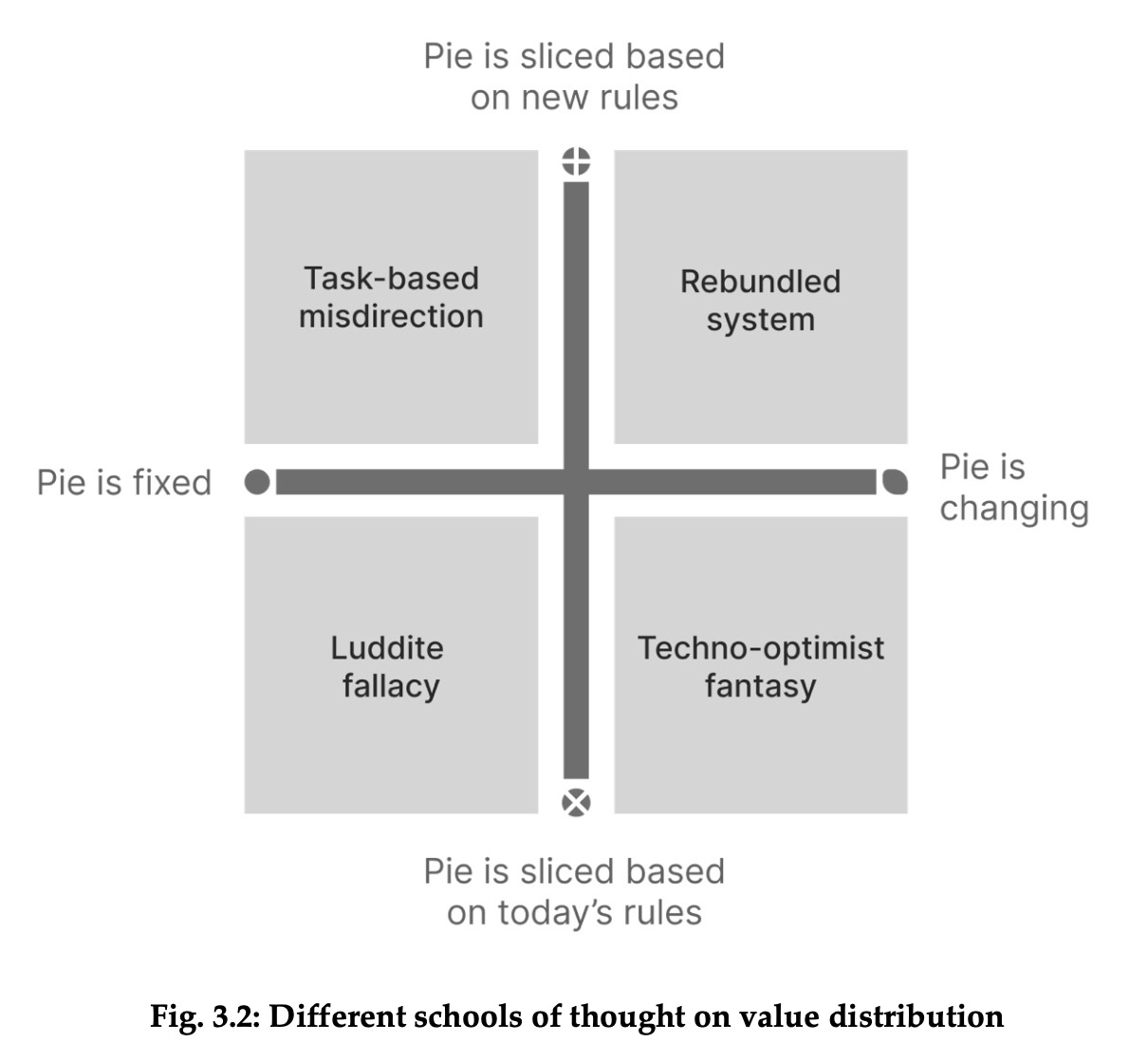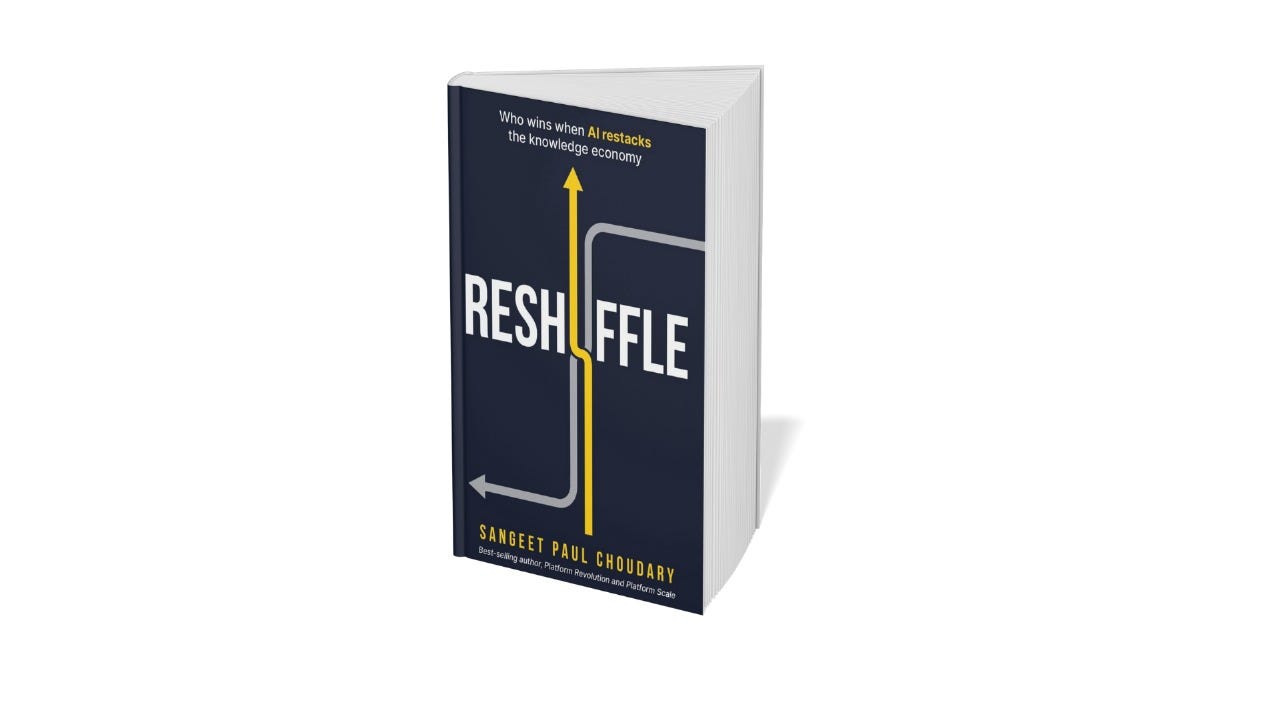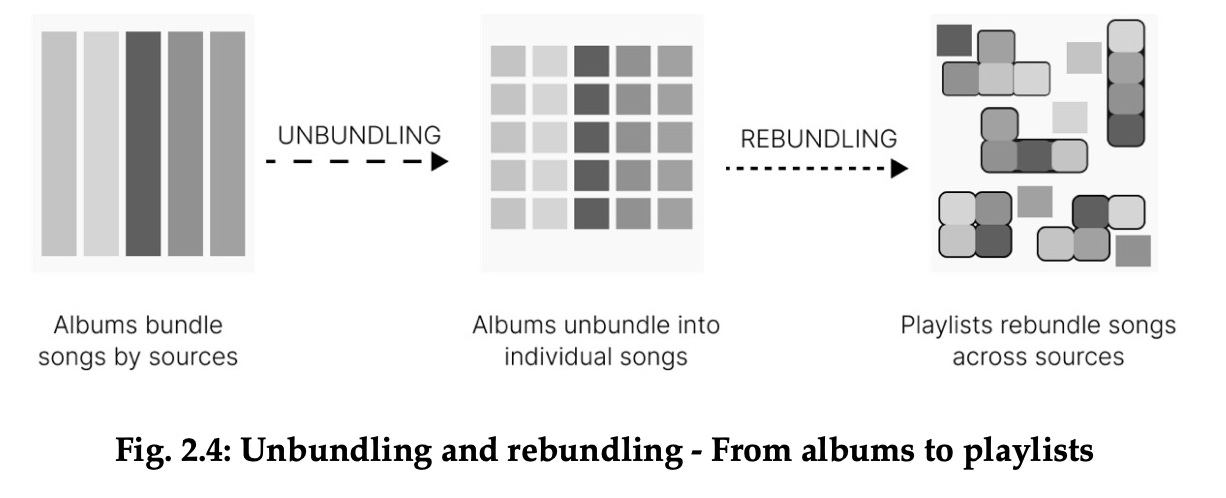How to intellectually debate AI while completely missing the point
Why both sides of the argument on AI miss the point
The conversation around AI tends to polarize quickly.
On one side, there’s the anxious chorus of doomsayers, warning that automation will eliminate jobs and render people obsolete.
On the other side, the techno-optimists appear, brushing off the fear and proclaiming that innovation is a tide that lifts all boats. History, they’ll remind you, is full of moral panics about machines replacing people, and yet, look around, the economy’s bigger than ever.
There’s a problem with this polarized debate - both sides are having the wrong conversation. They’re locked in a tug-of-war over whether the pie grows or shrinks while missing what’s really happening: AI, like many other technological breakthroughs before it, grows the pie, but the growing pie isn’t sliced in a way that everyone gets their fair share.
When technology shifts, it doesn’t merely add value;
it also reorders the balance of power.
A wider lens to understand the impact of AI
We tend to treat economic growth and inequality as separate issues, as if one belongs to macroeconomics and the other to ethics. But they’re deeply intertwined.
A growing system does not mean shared prosperity. In fact, growth and inequality often rise together, because the very mechanisms that expand the pie also determine how it’s divided.
Today’s polarized debate on AI is rooted in task-centric framing. It frames the problem in terms of job loss or productivity gains, but overlooks the more significant shift.
AI doesn’t just change what we do. It changes how systems are restructured and who has control over them.
To clarify this, let’s map the landscape, not as two opposing viewpoints, but as four distinct positions based on how the pie grows and how it’s sliced.
The Luddite fallacy of machines taking over jobs in a fixed system sits at the bottom-left. It’s a fear that’s easy to mock in hindsight, but it persists because even with system shifts, people do lose out. Entire communities built around a specific skill or workflow can vanish in a generation.
Scoot over to the bottom-right, and you have the techno-optimist fantasy that innovation will expand the pie for everyone. The myth that AI will only make the world a better place for all is hyped incessantly by startups selling a vision of future productivity. However, a closer look reveals rising evidence of wage stagnation, power concentration, and growing inequality, which tells a different story.
In the top-left quadrant, we find task-based misdirection. People sense that work is changing, but still treat the pie as fixed. They believe jobs will look different because AI will take over tasks, not because the system itself is changing. In this view, humans govern and supervise AI while it executes at scale, but the underlying architecture of value creation stays the same. It’s a comforting simplification, but also a trap.
This brings us to what’s really happening: the pie is growing, but not everyone will benefit from the gains. This is the quadrant of rebundling, where entire industries are being rebuilt around new logic.
All three other quadrants still run with the task-centric framing. Only in this quadrant is AI seen as the engine for a new system.
In this world, success is no longer determined by getting better at playing yesterday’s game using AI. It’s defined by whether you’re playing the right game.
Former giants collapse, not because they didn’t adopt the tools, but because they adopted them into old systems.
Kodak went digital, and Barnes and Noble had a website and an e-reader. In the end, it didn’t really matter.
Most debates about AI still live in the bottom half of the grid: Will jobs vanish? Will productivity rise?
The real question is up and to the right: Who defines the new rules? Who captures the upside? And who’s holding the knife when the new pie gets sliced?
The growing pie doesn’t get shared equally. It gets divided by those who control the means of coordination.
This is the fundamental idea of a reshuffle. New winners and losers emerge, not despite a growing pie, but precisely because of it.
Reshuffle
The above is an excerpt from my newly launched book Reshuffle.
No, not another book on AI?
Reshuffle is as much a book about AI as the Dark Knight is a movie about Batman.
As I mentioned in the last post, the Joker drives the movie plot, escalates every central turning point, and forces all the other characters to react. The film’s most profound questions, of chaos versus order, moral compromise, and the fragility of social contracts, are posed by the Joker.
Unlike traditional superhero films, this movie doesn’t build toward the hero’s triumph, but rather toward the moral cost of survival in a world shaped by the Joker.
The real story of AI’s impact lies less in understanding when a certain technology hits a certain performance benchmark and more in understanding how economic systems change in response to new technology. Systems, not technology, determine the story.
AI’s impact is often framed in narrow terms - what work it replaces, what jobs it threatens, and how it boosts productivity.
However, the real impact of AI comes not from how it performs a task,
but from how it restructures the entire system around that task.
If we stay trapped in task-based thinking, we remain stuck in one of the 3 quadrants above.
Reshuffle moves the discussion into the fourth quadrant and provides a comprehensive framework to explain
(1) How technology changes the rules of competition
(2) How organizations transform in response to (1)
(3) How jobs transform in response to (2)
Conversely, it also explains
(1) How individuals and teams leverage new tech to innovate
(2) How workflows and orgs change as a result
(3) How some firms accordingly rewrite the rules of competition in their favor.
A combination of these inside-out and outside-in shifts transform the overall system.
An overview of the book
Instead of dwelling on AI’s technological advancements, this book focuses on the systems into which AI is introduced - jobs, customer journeys, workflows, organizations, and even entire competitive ecosystems - and how they must evolve to exploit AI’s capabilities fully.
Central to this approach is the framework of unbundling and rebundling: breaking down existing systems into their components and reassembling them in new ways to create value.
To explore this transformation, the book is structured in three sections that follow the arc of AI’s impact, from
(1) How we think about it, to
(2) How it changes how we work, to
(3) How it restructures competitive advantage and power.
We begin by reframing the mental models through which we understand AI.
Reshuffle - Section 1
The chapters in Section 1 demonstrate that AI is not merely a tool of automation or substitution, but a force that transforms the economic logic of any system by changing how value is created and distributed, and how these changes reallocate power.
Reshuffle - Section 2
In Section 2, we zoom in on the world of work and the opportunities and limitations introduced with AI. We look at how AI restructures organizations and the roles and workflows within them. We also examine the opportunities it creates, not in terms of new jobs, but in terms of new value. Many tasks that once commanded high value may decline in relevance, while new points of leverage emerge elsewhere in the system.
In a system that’s constantly shifting, it’s a mistake to keep looking for the next job title once old ones no longer apply. The real opportunity for workers is to track where value is headed and position themselves in its path.
Reshuffle - Section 3
Finally, we scale out to the level of ecosystems and economies. In this section, we examine how AI restructures competitive advantage, how it elevates new winners and eliminates previous ones, how it changes erstwhile partners to competitors and makes friends out of yesterday’s foes, and how it changes the very logic of an industry.
AI doesn’t merely offer a better way to play the same old game. It offers an opportunity to reimagine the playing field in your favor.
This is not a book about technology. There are many ways to discuss technology, but writing a static book that tries to capture the specifics of a rapidly changing field isn’t the most helpful approach.
Instead, this book focuses on something far more enduring. It examines how technology shapes the systems around us and changes who wins and who loses every time a significant technological shift occurs.
By tracing this arc, from how we frame AI to how we reimagine work and rethink power, I aim to offer a practical lens for understanding how AI changes economic systems as a whole, irrespective of which specific technologies improve or fade.
Your move
Get your hands on the book. And hit me back with your thoughts and reactions.
If you enjoy reading the book, do drop in a review on Amazon that helps others make an informed decision. Or share about it further on social media to spread the news further.
As a thank you, please reach out to tripta@platformthinkinglabs.com with a link/screenshot of the review, and we’ll send you an exclusive bonus chapter from the book, on agentic competition.





Excellent post, and look forward to the book.
I offer the bottom two quadrants represent how humans tend to think of all complex topics in binary fashion.
For example, the Medicaid debate recently was simply whether or not people would lose coverage, not that it delineates changing the whole dynamic of Medicaid, which it does, and whether that’s what was desired
Another example: Blockbuster and Netflix! Contrary to some writing, Blockbuster did not ignore Netflix, they invested in the same technology but they did pile it on an old system.
Perhaps the point is: when consumer behavior changes, investing in a technology and piling it on an old system fails. But if consumer behavior does not change, deploying technology like AI to enhance productivity for example is just good enough